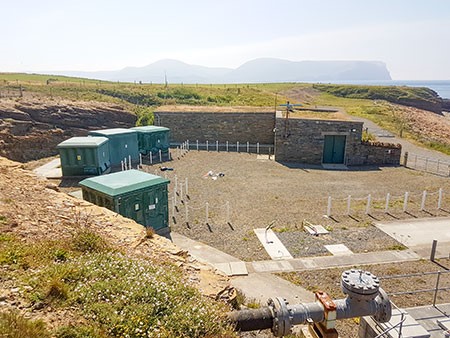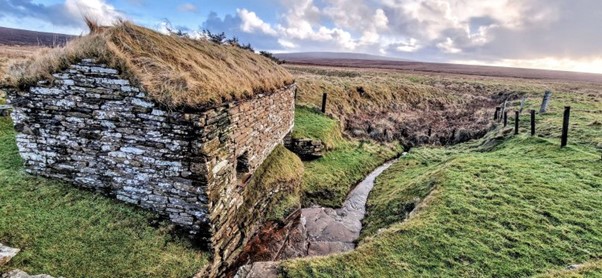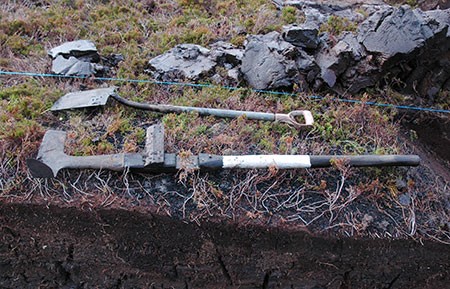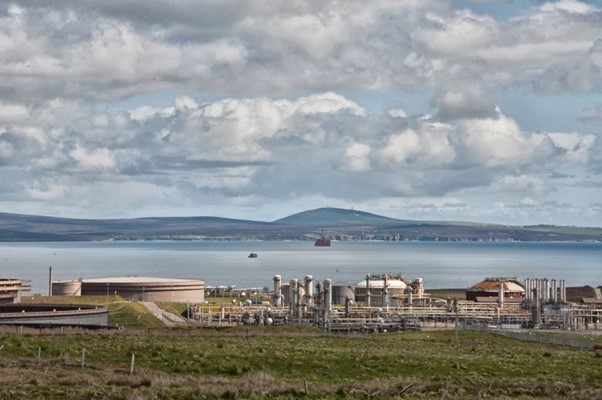Work is underway to develop an energy heritage strategy for Orkney
An innovative new project to document the history of energy production in Orkney is underway, its goal is to create an Energy Heritage Strategy for the county.
Orkney has a long history of energy production – from the use of traditional fuels such as peat to the more recent extraction of oil, exploration of uranium, and current world-leading renewables industry.

The islands can claim to be a global birthplace of renewable energy, with the pioneering development of wind power generation in the 1950s at Costa Head (the first grid-connected wind turbine), the tidal and wave power generation over the last decade, for example at Billia Croo, and the development of green hydrogen production.
These industries have an emerging history and have left physical traces in the landscape which can be recorded archaeologically. Along with the energy devices themselves, and the material culture surrounding energy sites, there are the stories and memories of the workforce and communities involved.
More generally, industrial heritage can often be overlooked, and perceived as unsightly and too recent to receive the recognition it deserves. There is various national and UK strategies which include industrial heritage, but as yet nothing that specifically deals with Orkney’s unique energy story.
Considering the importance of Orkney’s global role in energy production, the wealth of physical and intellectual material that exists, and in response to wider industry aspirations for a joined-up approach to energy heritage in its broadest sense, there is a clear need for an Energy Heritage Strategy for Orkney.
This would guide and prioritise current energy heritage initiatives and underpin future ones (e.g., field recording, archiving, curation, oral histories, heritage centres etc).

ORCA’s Dan Lee and Gareth Talbot have received funding from the UHI’s Energy Innovation hub to start the project, initially working with European Marine Energy Centre (EMEC) and Aquatera. The aim is that this initial phase will be completed by the summer.
This first phase, which will be completed by the summer, will audit what material exists (such as devices, facilities, documentation, digital data and photographic and written histories); the energy sites themselves; an understanding of industry aspirations and priorities for collecting and disseminating this material and how this could be done; exploration of collection policies of museums and the presentation of an action plan for the development of the subsequent stages of the Orkney Energy Heritage Strategy.

Phase two (2023-4) will involve addressing the action plan, producing detailed audits, undertaking interviews with key people and a stakeholder workshop to gather detailed feedback, establish agreed gaps in knowledge and set priorities.

A spade and a tusker – two tools for cutting peat. (Dan Lee)
This will result in a completed Orkney Energy Heritage Strategy, which, it is hoped, will feed into policy-making, guide the recording, protection and management of energy sites, the curation of objects and collection of oral histories from the recent past and support heritage considerations for new energy initiatives now and in the future.
Dan Lee explained: “The need for a joined-up energy heritage strategy for Orkney was clear from our recent Orkney Energy Landscapes project, with the new strategy forming an umbrella over initiatives past and present to tell Orkney’s unique energy story.”
Gareth Talbot added: “There are lots of great energy initiatives from a wide range of organisations and people in Orkney, and we hope this strategy will tie all this together and provide a collective trajectory for the future.”
